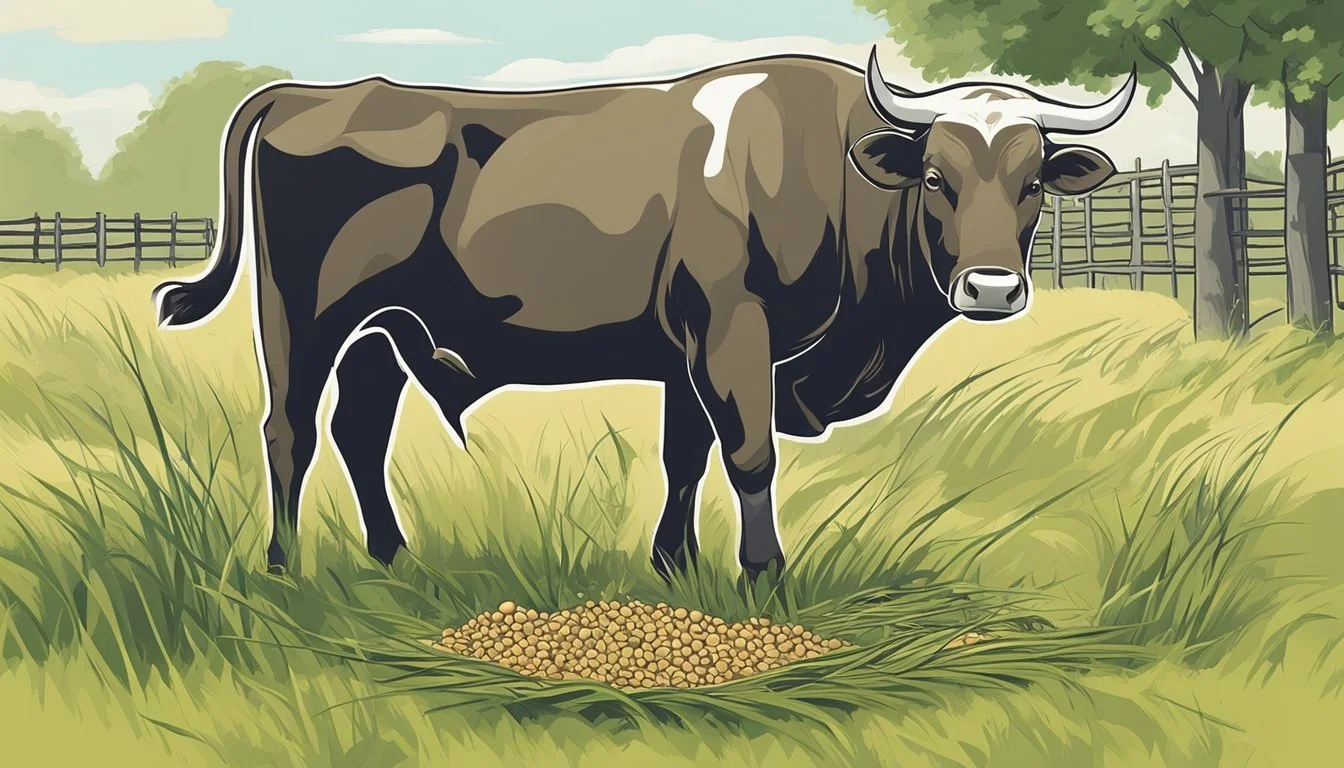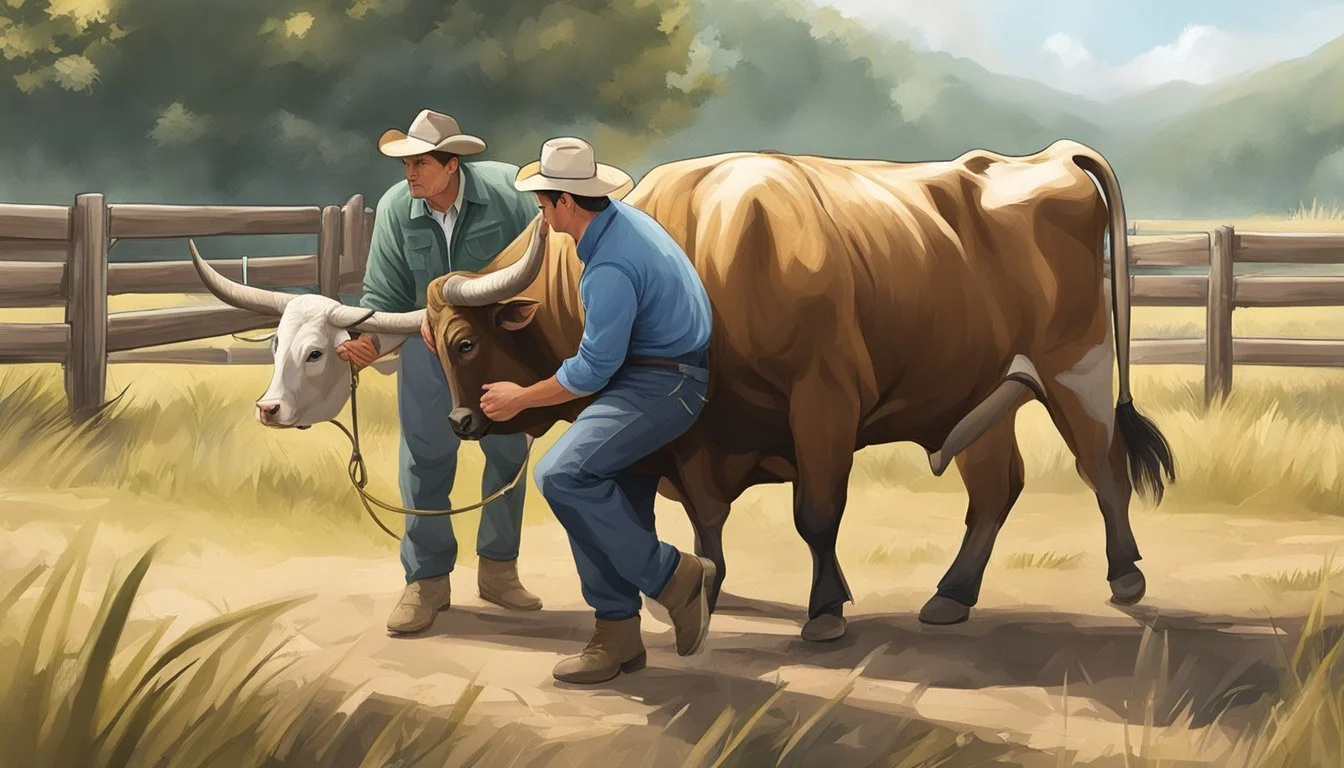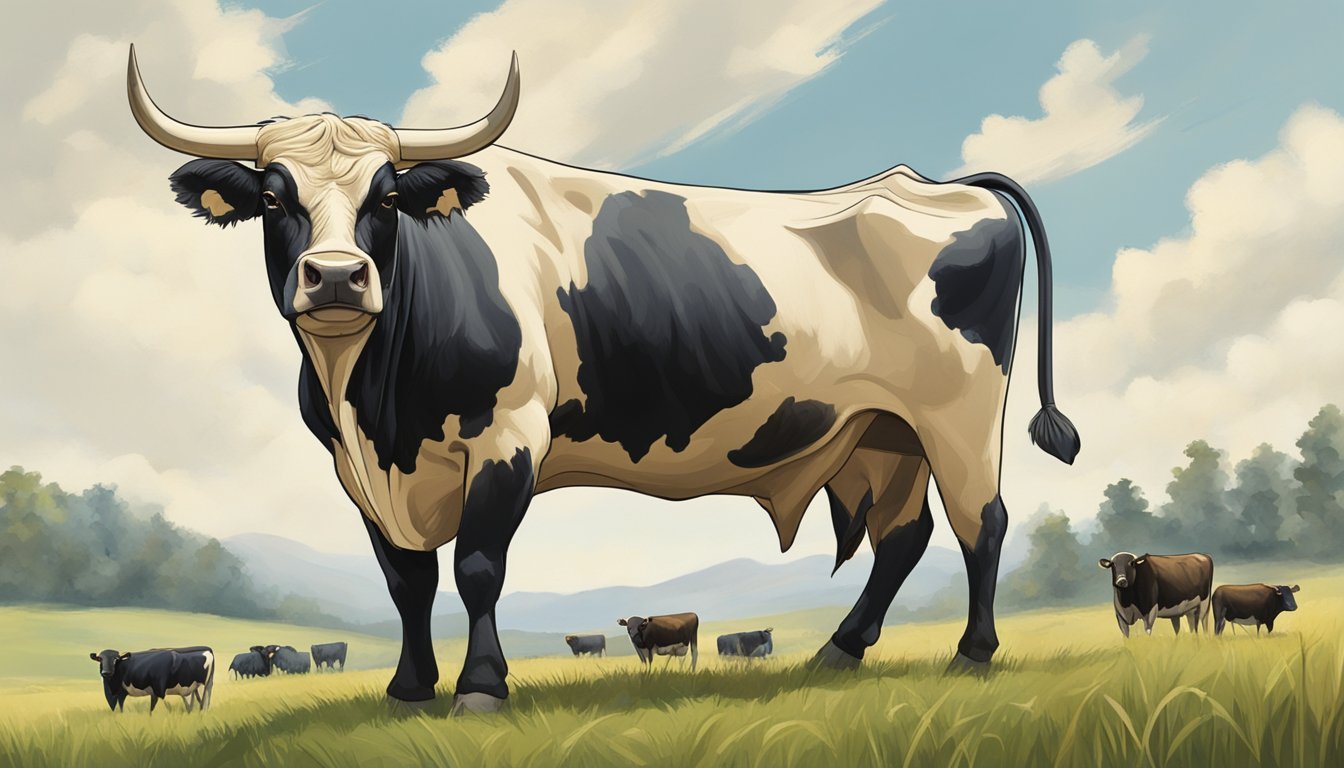How do I Manage a Bull During Breeding Season
Effective Strategies for Livestock Owners
Effective management of bulls during the breeding season is crucial to ensure successful reproduction rates in a herd. To start, it's important to understand that the health and condition of bulls can significantly impact their breeding capabilities. Bulls should be in good physical condition, with veterinarians often recommending a breeding soundness exam well before the breeding season commences. This process, typically suggested to be done 60 days in advance, allows ample time for any necessary interventions in case of health issues.
Nutrition also plays a vital role during this period. Young or less conditioned bulls may require a diet with higher energy and protein content to promote gains, ensuring they reach the appropriate weight for their age and breed. Ideally, after their first breeding season, bulls should be managed to weigh between 65% to 75% of their estimated mature weight by the time they turn two. This not only compensates for any weight lost during the breeding season but also supports their continued growth.
Finally, managing the bulls' workload is important to prevent fatigue and overuse, which could lead to decreased fertility. A bull's breeding schedule should balance their ability to service a certain number of females without impairing their health or performance. It's critical that they are monitored for any signs of injury or exhaustion throughout the breeding season to maintain a high level of productivity.
Understanding the Breeding Season
Managing bulls during the breeding season is crucial for successful livestock reproduction. Two key components are the Bull Breeding Soundness Exam and understanding the Breeding Season Timeline for Bulls.
Bull Breeding Soundness Exam
Conducting a Breeding Soundness Exam (BSE) is a critical step in preparing bulls for the breeding season. This exam should be performed by a veterinarian at least 60 days before the breeding season starts to assess semen quality and overall fertility. Bulls that fail the initial BSE should be retested 30 days later, providing a window to find a replacement if necessary. A comprehensive BSE evaluates physical attributes, reproductive organs, and semen characteristics to ensure the bull is capable of effective breeding.
Breeding Season Timeline for Bulls
The timeline leading to the breeding season involves several important milestones. Initially, bulls need conditioning to reach optimal body condition for breeding, including an energy-dense diet to support activity and potential weight gain after their first breeding season. Bulls should weigh 65% to 75% of their mature weight by the age of two. During the breeding season, effective management includes monitoring bulls for breeding behaviors and confirming successful matings. Post-breeding season, bulls require recovery from weight loss and possible injuries incurred, which is crucial for maintaining long-term fertility and health.
Managing Bull Nutrition
Proper management of bull nutrition is critical during the breeding season to ensure they maintain optimal body condition and reproductive performance. Specific nutritional requirements must be met, including adequate intake of forage, crude protein, minerals, and vitamins.
Nutritional Requirements
Bulls require a diet that supports their energy needs and sustains their muscular and reproductive systems. Their body condition should be monitored regularly, as it is a direct indicator of well-balanced nutrition. A bull's diet typically consists of total digestible nutrients (TDN) ranging from 55% to 65%, and crude protein (CP) needs to be around 7.5% to 9% for optimal health and performance. During winter, when natural forage quality declines, the energy requirements for warmth can increase, which must be considered in their nutrition program.
Supplementation and Feed Quality
High-quality feed and supplementation are imperative to counterbalance any deficiencies in natural forage.
Mineral supplementation is vital, and a complete mineral mix should contain around 12% calcium and 4% to 6% phosphorus.
Expected mineral consumption rate stands at about 4 ounces per head per day, facilitating appropriate nutrient absorption, as mentioned in Nutritional Strategies for Bull Development and Maintenance
Vitamin supplements, especially A, D, and E, are also crucial, particularly if forage diets are inadequate.
It is important to provide a consistent and high-quality feed to maintain proper body condition and ensure bulls have the energy and stamina for the breeding season.
Evaluating and Monitoring Health
Effective bull management during the breeding season requires vigilant health monitoring to maintain optimal performance. Establishing benchmarks for health and condition ensures the bull is ready to perform without being compromised by underlying health issues.
Conducting Regular Health Checks
Regular health checks are crucial, focusing on the bull's body condition score (BCS), which should be evaluated and adjusted to ensure he is not too thin or too fat, aiming for a BCS of 5.5 to 6.5. A robust health program, involving a veterinarian, can preempt issues related to stress, vaccination, and deworming. Any sign of injury should be addressed promptly to prevent further complications. It's important to observe the bull for signs of lameness or pinkeye—conditions that can significantly affect performance.
Preventing Common Diseases
Bull management during breeding season includes proactive measures to mitigate common diseases. Implementing a comprehensive vaccination program protects not only the bull but the entire cow herd from transmissible diseases. Biosecurity measures, such as quarantining new animals and managing vectors like flies, reduce disease risk. Stress minimization strategies are key, as stress can lead to immunosuppression and increased disease susceptibility. Deworming is another preventive step that should not be overlooked to ensure the bull maintains optimal condition and health.
Ensuring Physical Soundness
Effective management of a bull during breeding season hinges on ensuring the bull's physical soundness, which significantly influences its ability to breed. Factors such as age, growth, and the condition of legs and feet come into play, each impacting spermatogenesis and overall reproductive performance. Proper assessment and care for these physical attributes are critical for preventing lameness and leg issues that can impair a bull's breeding capabilities.
Assessing Structural Soundness
Age and growth are primary considerations when assessing structural soundness. As bulls mature, their skeletal structure must be robust enough to support their weight and facilitate breeding without risk of injury. Evaluating the legs for proper angle and strength ensures that leg issues do not develop, which could lead to lameness and negatively affect fertility. It's important that each bull exhibits good conformation, with straight, strong legs and a smooth stride.
Addressing Hoof and Mobility Issues
The condition of a bull's feet is just as crucial as the rest of its physical framework. Regular hoof trimming and monitoring for hoof diseases are preventative measures that maintain mobility and comfort. When hoof and mobility issues are promptly addressed, risks of lameness that can impede a bull's ability to service cows are significantly reduced. Maintaining dry bedding and clean walking surfaces can prevent problems before they arise, safeguarding the bull's reproductive soundness.
Optimizing Reproductive Performance
Fostering optimal reproductive performance in bulls involves meticulous management of herd dynamics and strategic breeding techniques. These efforts contribute to the genetic advancement and reproductive success of cattle herds.
Bull Ratio and Herd Dynamics
A well-calculated cow-to-bull ratio is crucial for a successful breeding season. For mature bulls, a common ratio is one bull for every 25 to 30 cows. However, for yearling bulls, they should be matched with a smaller number of cows, typically one bull for 15 to 20 cows. These ratios help ensure that each bull can effectively service a set number of females without overexerting, which can adversely affect both the bull's condition and fertility. Adjustments may be necessary based on the bull's age, health, and breeding experience. Young bulls require close monitoring and may need a more favorable ratio to ensure they are not overwhelmed, promoting both their welfare and productive longevity.
Genetics and Breeding Strategies
The foundation of genetic improvement in cattle relies on selecting genetically superior bulls that possess desirable traits. Employing breeding strategies that pair these bulls with carefully chosen cows can lead to enhanced reproductive success. This involves understanding and selecting for traits that boost fertility and calf viability. Artificial Insemination (AI) and Embryo Transfer (ET) are two techniques that can be leveraged to disseminate superior genetics more efficiently. Moreover, keeping accurate records of performance and genetics helps inform future breeding decisions and track genetic improvement efforts within the herd.
By prioritizing both the physical management of bulls during the breeding season and the strategic selection of genetics, cattle operations can enhance the reproductive outcomes and overall productivity of their herds.
Managing Breeding Pastures
Proper management of breeding pastures is crucial. Producers need to focus on selecting suitable pastures and ensuring the comfort of the bulls during varying seasonal conditions.
Selecting and Preparing Pastures
When selecting pastures for the breeding season, producers must consider topography, forage availability, and access to clean water sources. Shelter such as trees or man-made structures should be present to provide protection from the elements. The pasture area should allow easy monitoring and management of the bulls, with secure fencing to contain them safely.
Forage Quality: Evaluate and ensure a high level of forage quality to maintain bull health and condition.
Water Accessibility: Bulls require daily access to clean water; water sources should be checked and maintained regularly.
Fencing: Durable fencing that can withstand the robust activity of breeding bulls is necessary.
Seasonal Considerations and Bull Comfort
During the breeding season, bulls may face extreme heat or weather conditions. It is vital to mitigate the effects of the elements to maintain bull fertility and general well-being.
Heat Stress Mitigation: Provide ample shade through natural canopy or built structures to reduce the impact of heat.
Windbreaks: In windy or cold climates, establish windbreaks to protect bulls from harsh weather.
Monitoring Weather Conditions: Keep a close eye on forecasted weather to make necessary adjustments to the breeding pasture environment.
Monitoring and Enhancing Bull Fertility
Effective management of a bull's fertility is crucial during the breeding season. This includes regular fertility assessments and addressing any issues of subfertility or infertility to ensure a successful breeding program.
Fertility Assessments and Improvement
Early identification of potential fertility issues in bulls is pivotal to a successful breeding season. Libido and fertility can be assessed through comprehensive examinations, which should include body condition scoring to ensure the bull is neither underweight nor overweight, which can impact performance. A veterinarian may conduct a spermatogenesis evaluation, scrutinizing the scrotum for abnormalities and testing semen quality.
Improvement of fertility can be driven by nutritional adjustments targeting a bull's specific needs, ensuring a diet that supports optimal body condition, and maintains a high energy level to exhibit consistent libido and estrus detection.
Dealing with Subfertility and Infertility
When a bull exhibits signs of subfertility or infertility, swift action is required. Subfertility might manifest as reduced semen quality or lower libido, while infertility is characterized by an inability to impregnate cows. Management strategies include adjusting the bull's diet to promote better body condition and consulting a veterinarian to diagnose and treat medical conditions affecting reproductive performance.
For bulls with low libido, environmental and management changes might be necessary, such as minimizing stressors and maintaining a favorable bull-to-cow ratio. Regular monitoring and intervention can help mitigate these fertility issues and improve the prospects for a productive breeding season.
Preparing for Off-Season Management
Managing a bull involves diligent off-season attention to ensure he is fit for the next breeding season. Essential to this period are a post-breeding assessment and conditioning strategies that set the stage for optimal performance, impact on calf crop, and longevity.
Post-Breeding Evaluation
After the breeding season concludes, a thorough evaluation of the bull's physical condition is crucial. This includes assessing weight loss and body condition score (BCS), which should reveal if the bull has lost significant condition. Key areas to inspect include the brisket and tail head, as changes here might indicate a drop in BCS. Monitoring these factors can indicate the health status and overall productivity of the bull post-breeding.
Conditioning for Next Season
During the off-season, conditioning revolves around returning the bull to a body condition score ideal for the next breeding season. This often requires diet adjustments to address any weight loss and to promote recovery. Bulls should be fed to reach a BCS of 6 on a scale of 1 to 9 before the breeding season starts, ensuring they have the reserves to support activity without becoming overweight, which can negatively affect longevity. Proper off-season management therefore supports both immediate recovery and future reproductive success.
Advanced Management Considerations
When managing bulls during the breeding season, it's crucial to consider both the age of the animals and the available technological tools that can optimize their performance.
Age-Specific Management
Managing bulls appropriately requires understanding that different ages necessitate distinct nutritional and health strategies. Younger bulls, especially those entering their first breeding season, require a careful balance of nutrients to support both growth and reproductive capability. They typically need a diet of roughage at 2% of body weight with higher crude protein (CP) and energy density to stimulate gains. On the other hand, mature bulls might only require maintenance diets, with emphasis placed on maintaining structural soundness and overall condition. Veterinarians often play a key role in monitoring bull health, ensuring they are fit and prepared for the breeding season, with breeding soundness exams conducted well in advance.
Nutritional Needs Across Ages
Younger Bulls:
Roughage: 2% of body weight
Higher CP: 7.5%-9%
Energy-dense diet: 55%-65% total digestible nutrients (TDN)
Mature Bulls:
Focus on maintenance
Monitor and maintain structural soundness
Assess and uphold condition scores
It’s essential to monitor bodyweight and condition to ensure that bulls are within the target range of 65% to 75% of their estimated mature weight by their second year. This management is critical after the first breeding season to compensate for any weight loss and support continued growth.
Technological Advancements in Bull Management
In the realm of genetic selection and bull development, technology is revolutionizing the way bulls are managed during the breeding season. Advances in genetic testing provide breeders with valuable data to make informed decisions that can affect the performance and longevity of breeding bulls.
Technological Tools
Genetic Testing:
Enables selection based on desirable traits
Can predict future health and performance
Software Solutions:
Track individual bull health and condition records
Manage breeding schedules efficiently
Breeders are increasingly using these tools to ensure that their bulls possess attributes that will contribute positively to the herd’s genetic profile, such as improved fertility and calving ease, which are directly linked to increased profitability. Regular consultations with veterinarians, utilizing the data from such technological tools, empower breeders to conduct preemptive measures for optimal breeding outcomes.








